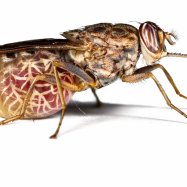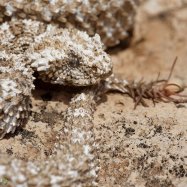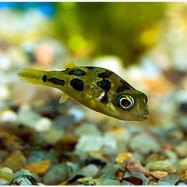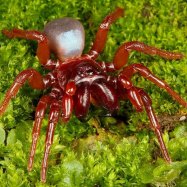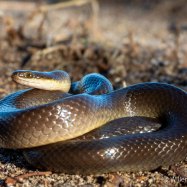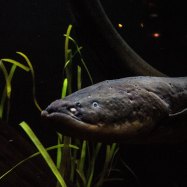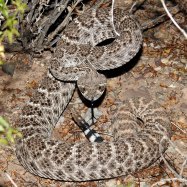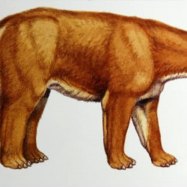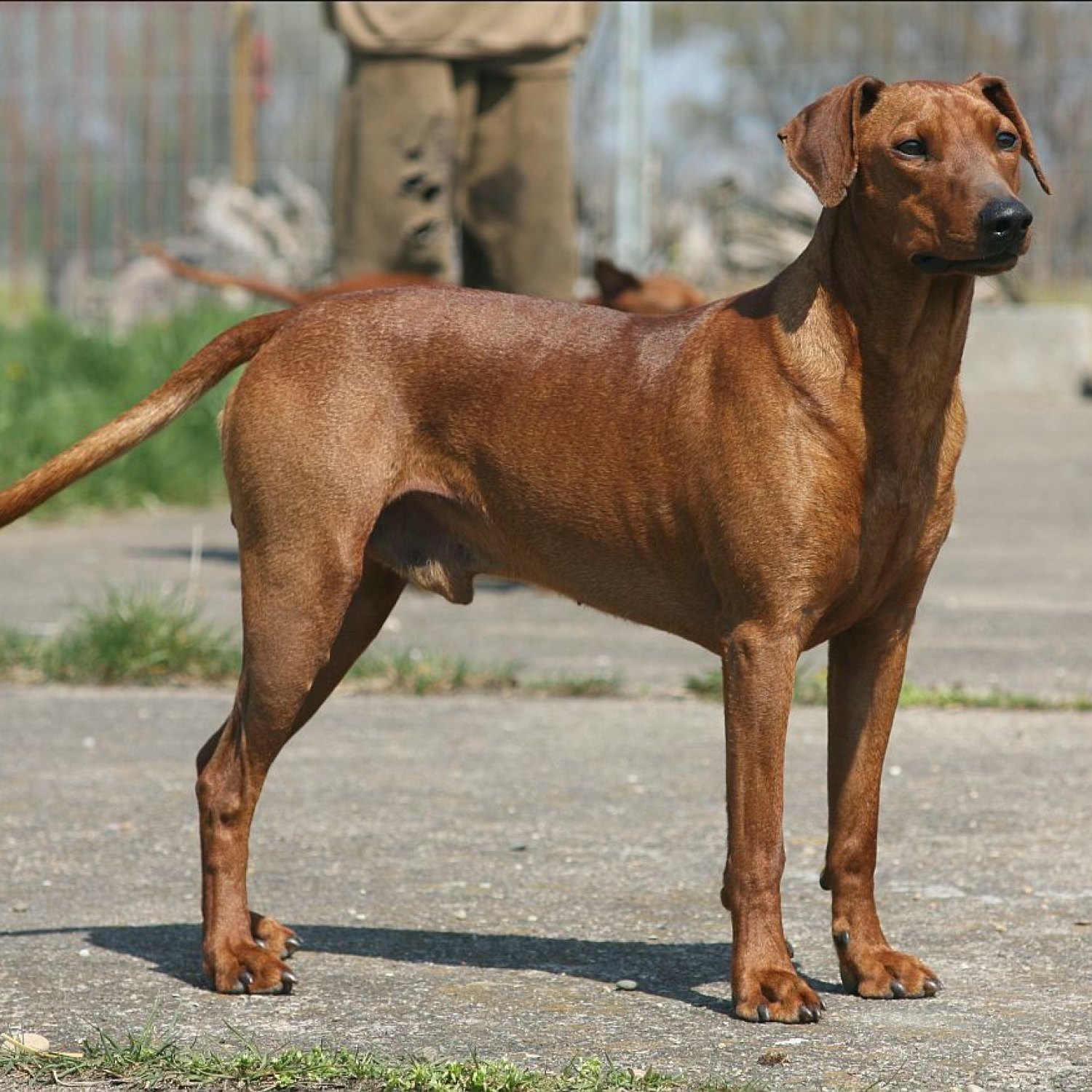
German Pinscher
17-20 inches (43-51 cm)
The German Pinscher, a member of the Canidae family, is a medium-sized dog with a height of 17-20 inches. They can be found in both urban and rural areas, making great companions for city dwellers and country lovers alike. With their sleek and athletic body, they are perfect for active families looking for a loyal and energetic pet.
Animal Details Summary:
Common Name: German Pinscher
Kingdom: Animalia
Habitat: Domestic
Classification and Habitat
The German Pinscher is scientifically classified as Canis lupus familiaris, which refers to the domestic dog. It belongs to the Animalia Kingdom, Chordata Phylum, and Mammalia Class. The breed falls under the Carnivora Order and Canidae Family, making it a close relative of wolves and other dog breeds.
As domesticated dogs, German Pinschers are most commonly found in urban and rural areas, living alongside their human families. They are adaptable and can thrive in various environments, making them suitable for both city and country living. However, they do require regular exercise and mental stimulation to keep them healthy and happy.
Appearance and Body Shape
German Pinschers have a muscular and well-proportioned body, with a medium-sized frame. The breed can grow up to 17-20 inches in length, with a weight ranging from 25-45 pounds, depending on gender. They have a streamlined and elegant body shape, with a slightly elongated muzzle, giving them a distinct and alert appearance Golden Dox.
One of the most striking features of the German Pinscher is its coat color, which comes in four shades – black, red, blue, and fawn. The fur is short, dense, and shiny, with a finer undercoat. The dog's coat requires minimal grooming, making it a low-maintenance breed.
Temperament and Training
German Pinschers are known for their lively, energetic, and fearless nature. They are intelligent and require regular mental stimulation to prevent boredom. With proper training and socialization from a young age, they can make excellent family pets. However, they can be a handful for inexperienced or first-time dog owners, as they have a strong personality and can be stubborn at times.
These dogs have a natural instinct to protect their families, making them excellent watchdogs. They are also extremely loyal and affectionate towards their owners and thrive on human companionship. However, due to their strong prey drive, they may not be suitable for households with smaller pets, such as cats or birds.
Feeding and Health
As carnivorous animals, German Pinschers have a diet heavily reliant on meats. A high-quality, balanced diet is crucial for their overall well-being and health. A typical adult German Pinscher requires around 1.5-2 cups of food per day, divided into two meals. It is essential to monitor their food intake, as overfeeding can lead to obesity, which can cause various health issues.
Overall, the German Pinscher is a relatively healthy breed, with minimal genetic health problems. However, like all dogs, they are prone to certain health conditions, such as hip and elbow dysplasia, eye diseases, and allergies. Regular veterinary check-ups, a balanced diet, and adequate exercise can help prevent and manage these conditions.
Training and Socialization
Early training and socialization are crucial for German Pinschers to become well-rounded and obedient dogs. They are highly intelligent and require mental stimulation to prevent destructive behaviors. Training should be consistent, firm, and positive, using rewards and praises. Harsh training methods may have adverse effects, leading to fear and aggression in the dog.
Socialization is equally important, as it will help German Pinschers become comfortable and friendly around other people and animals. Early exposure to different environments, sounds, and social situations will help them develop into well-adjusted and confident dogs.
Grooming and Maintenance
As mentioned earlier, German Pinschers have a low-maintenance coat that does not require extensive grooming. However, regular brushing will help keep their coat clean and shiny. They shed moderately, and brushing can help remove any loose fur, preventing it from getting all over the house.
Their teeth should be brushed at least twice a week, with nails trimmed regularly to prevent them from getting too long or split. Checking their ears for any signs of infection and cleaning them as needed is also essential. Overall, the German Pinscher is a relatively low-maintenance breed, making them an ideal choice for busy households.
Origin and Popularity
The German Pinscher's origins can be traced back to Germany in the 17th and 18th centuries, where they were used as rat and vermin hunters on farms and in stables. They were also used as guard dogs, showcasing their intelligence, bravery, and loyalty. However, due to the Second World War, the breed faced near extinction, but thanks to dedicated breeders, it managed to make a comeback.
Today, German Pinschers are popular not only in their home country but also around the world. They are recognized by various kennel clubs, including the American Kennel Club, and have also been featured in movies and television shows. Their popularity is on the rise, and they are now gaining a reputation as a reliable and loyal companion in many households.
In Conclusion
There is no denying that the German Pinscher is a fascinating breed with a rich history and unique features. Its loyal, intelligent, and playful nature makes it an excellent companion for the right owner. However, it is essential to understand that this breed is not suitable for everyone and requires dedicated training, socialization, and exercise.
As with any animal, proper care and responsible ownership are crucial in providing a healthy and fulfilling life for the German Pinscher. So, if you are considering welcoming this lively and loyal dog into your home, make sure you are ready to give it the love, attention, and care it deserves.

German Pinscher
Animal Details German Pinscher - Scientific Name: Canis lupus familiaris
- Category: Animals G
- Scientific Name: Canis lupus familiaris
- Common Name: German Pinscher
- Kingdom: Animalia
- Phylum: Chordata
- Class: Mammalia
- Order: Carnivora
- Family: Canidae
- Habitat: Domestic
- Feeding Method: Carnivorous
- Geographical Distribution: Worldwide
- Country of Origin: Germany
- Location: Urban and rural areas
- Animal Coloration: Black, Red, Blue, Fawn
- Body Shape: Medium-sized
- Length: 17-20 inches (43-51 cm)
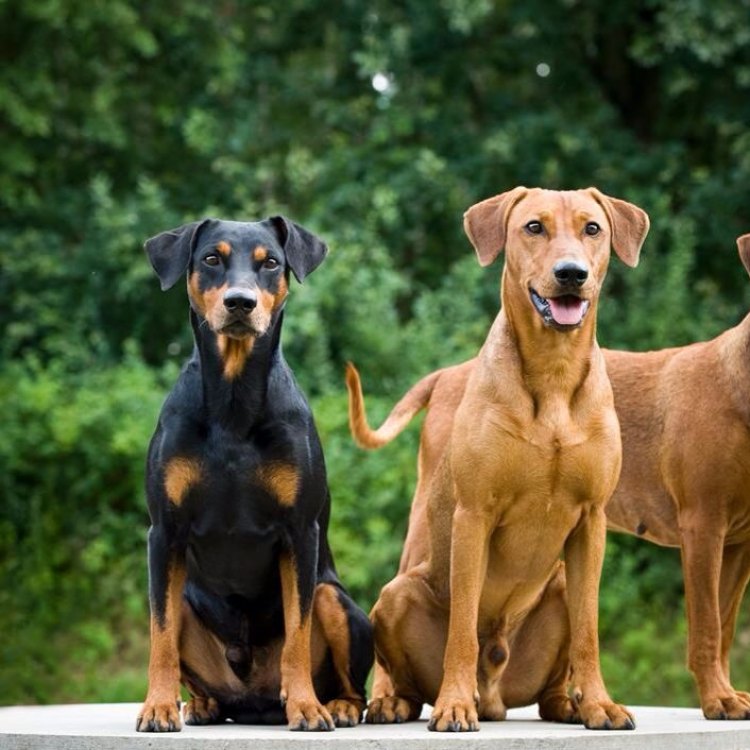
German Pinscher
- Adult Size: Medium-sized
- Average Lifespan: 12-15 years
- Reproduction: Sexual
- Reproductive Behavior: Viviparous
- Sound or Call: Bark
- Migration Pattern: Non-migratory
- Social Groups: Pack
- Behavior: Energetic, Intelligent, Alert, Courageous
- Threats: None
- Conservation Status: Domesticated
- Impact on Ecosystem: N/A
- Human Use: Companion dog, Guard dog
- Distinctive Features: Well-muscled, Short sleek coat, Docked tail, Cropped ears
- Interesting Facts: German Pinschers were originally bred as farm dogs and vermin hunters.
- Predator: None
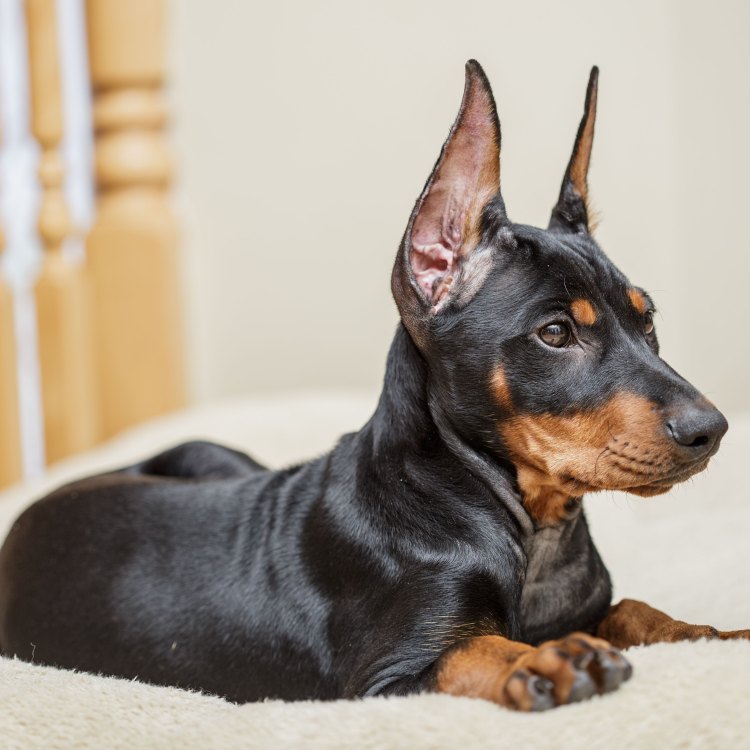
Canis lupus familiaris
The Fearless and Hardy German Pinscher: From Farm Dog to Loyal Companion
The German Pinscher, also known as the Deutscher Pinscher, is a breed of medium-sized dogs that originated in Germany. Despite its name, it is not related to the larger breed, Doberman Pinscher. This intelligent and lively breed has a unique history and distinctive features that make it stand out from other dog breeds.The German Pinscher is a medium-sized dog, typically weighing between 25-45 pounds and standing at 17-20 inches tall at the shoulder PeaceOfAnimals.Com. They have a well-muscled and athletic body, with a short, sleek coat that comes in various shades of red, black, and blue. Their most distinctive features are their docked tail and cropped ears, which were originally done for practical purposes but are now purely aesthetic. These dogs have a lifespan of 12-15 years, making them a long-term commitment for any potential owner.
These handsome and robust dogs were initially bred as working dogs, especially on farms, as they were excellent vermin hunters. Their primary job was to keep barns and stables free of rodents, but they were also used to hunt other pests such as mice and rats on the farm. They were also used to herd and guard livestock, showing their versatility as farm dogs. Over time, the role of the German Pinscher has evolved into a more domesticated one, becoming a beloved and loyal companion to many families.
Reproduction in German Pinschers follows the typical sexual process, with females giving birth to live young in a process known as viviparity. Female German Pinschers typically give birth to 3-6 puppies at a time, and the gestation period lasts for 63 days Great Kiskadee. These dogs are known to be excellent mothers, and they will dutifully care for their puppies until they are ready to be weaned.
One of the most notable characteristics of the German Pinscher is its bark, which it uses as its main form of communication. These dogs are highly alert and will bark at any perceived threat, making them ideal guard dogs. However, they are not aggressive by nature and only bark to alert their owners of potential danger. This protective behavior makes them excellent watchdogs as well.
Unlike some animal species that migrate during certain seasons, German Pinschers are non-migratory animals. They are known to be territorial and will protect their designated space fiercely. This behavior is tied to their pack mentality, as German Pinschers are social animals that thrive in groups. They consider their human family as their pack and will form strong bonds with them.
The behavior of German Pinschers is best described as energetic, intelligent, alert, and courageous. These dogs have a high energy level and require regular exercise to keep them physically and mentally stimulated. They are quick learners and respond well to positive reinforcement training methods. Their alertness and courage make them excellent guard dogs, and they are not afraid to stand their ground when faced with any danger.
Despite their fearless and protective nature, German Pinschers are not considered a threat to any ecosystem. These dogs are domesticated and have been selectively bred for centuries to be companions and working dogs. They have no natural predators, and their only role in the ecosystem is to provide love and companionship to their human counterparts.
Over the years, German Pinschers have become popular as both companion dogs and guard dogs. Their loyal and affectionate nature makes them excellent family dogs, and they form strong bonds with their owners. They are excellent with children and make great playmates. Their protective instincts also make them adept at guarding their homes and families, making them a reliable guard dog breed.
The distinctive features of German Pinschers, coupled with their unique history and behavior, make them an interesting breed. However, there are a few lesser-known facts about these dogs that may surprise you. For example, did you know that they were one of the first breeds to be used as police dogs? In World War I, German Pinschers were used by German police forces for various tasks, including guarding and tracking.
Another fun fact about German Pinschers is that they were on the verge of extinction after World War II. The breed nearly disappeared due to a lack of breeding stock, as well as a decline in their original purpose as farm dogs. However, dedicated breeders worked tirelessly to bring the breed back from the brink, and today the German Pinscher is considered a domesticated breed.
The German Pinscher may have had a rough start, but their future looks bright as a beloved companion and guard dog. These fearless and hardy dogs have truly come a long way from their humble beginnings as farm dogs. They continue to excel at their job as vermin hunters, but their most important role now is providing love and companionship to their human families.
In conclusion, the German Pinscher is a versatile and fascinating breed of dog that has managed to survive and thrive through the years. Their role may have evolved from farm dog to companion dog and guard dog, but their loyalty, intelligence, and courage remain constant. For anyone looking for a spirited and devoted canine companion, the German Pinscher is undoubtedly a breed worth considering.

Disclaimer: The content provided is for informational purposes only. We cannot guarantee the accuracy of the information on this page 100%. All information provided here may change without prior notice.


